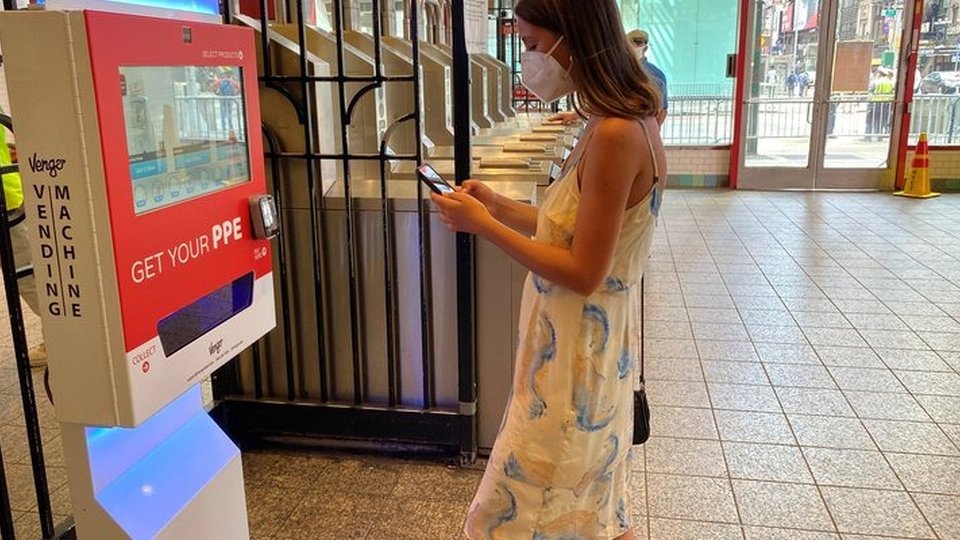Vending
Talking With: Caroline Jeannau, Worldline GSV, on vending’s changing role in a post-pandemic world
The pandemic has changed consumer habits in such a way that vending has taken on a new role for retailers looking to offer products safely and more conveniently.

November 15, 2021 by Elliot Maras — Editor, Kiosk Marketplace & Vending Times
It is often said that crises act as adrenaline for innovation and creativity — and the recent pandemic provides a stellar example of exactly that, having driven transformation across numerous industries in response to changing consumer behavior.
Not a lot of observers, however, anticpated the impact the pandemic has had on vending.
In parts of Asia, vending machines were well established as a form of commerce before the pandemic. But, elsewhere, vending machines have often been mere standbys for workplace break rooms, offering limited product choices.
At a time when consumers demand safe, hygienic, contactless ways to shop, vending machines have emerged in some unexpected places, providing a new and surprising array of products.
Caroline Jeannau, head of vending at Worldline GSV, a Bezons, France based provider of payments and transactional services, shared her insights with Vending Times about the new role vending machines are playing on account of the coronavirus pandemic.
Following are excerpts from the interview.
 |
| Caroline Jeannau |
Q. To what extent has the vending industry expanded since the pandemic?
A. During the pandemic, reports from all over the world showed vending machines selling COVID-19 tests and personal protective equipment, making it easier for the public to check and control their health. But innovation has not stopped there.
In Ireland, dairy farmers opened vending machines so that local communities could collect their milk. In Italy, prescription collecting machines became a big hit and in Japan, the undisputed home of the vending machine, kiosks began to sell, well, just about everything you could imagine.
As economies begin to recover, organizations are looking to take things to the next level as they continue to focus on providing an entirely frictionless consumer experience.
Key areas of focus include:
- Minimizing contact between people and limiting the potential spread of germs.
- Making the customer journey, from start to finish, as swift and efficient as possible through things such as shopping baskets, facial recognition and single payments.
- Providing greater choice to cater for a new generation of eco- and health-conscious consumers by, for example, reducing plastic based packaging and offering vegetarian or vegan-friendly food and beverage options.
- Ensuring that consumer payment details and other data is safeguarded, and the risk of fraud mitigated.
Q. How can vending make the most of technology?
A. The increasing capability, through technology, to track the performance of smart vending machines via tools such as data analytics and geographic information systems is also opening up exciting new ways for the industry to target markets and creatively expand.
Just as companies use GIS to optimize the location of their brick-and-mortar stores or analyze sales in specific markets, location intelligence could offer insight into the perfect placement of vending machines, all the way down to specific areas within city hot spots or even the floor level within different buildings.
Already we have seen two-thirds of vending sales in 2020 were cashless, according to the Vending & Automated Retail Association, the U.K. based vending association, and the move towards using everything from phones to wearable tech and contactless card transactions is only likely to continue accelerating.
Q. Is cashless now king?
A. Contactless and digital payments are a must-have in this new economic climate, particularly given how consumers are paying for small purchases, moving ever closer to a cashless society. Changing the way we make our daily transactions has rapidly led to payments becoming a quick and effortless process that reduces unnecessary contact.
By pairing vending machines with the latest contactless payment technology, merchants can remain at the forefront of this new trend, installing their selected payment provider's technology at the point of acquiring new machines or even retrofitted to many pre-existing machines.
Q. How can retailers stay ahead of the curve using vending machines?
A. For many years the vending machine world was fairly static, but a combination of new technologies, coupled with changing consumer desires, has supercharged innovation in this industry.
As a retailer, keeping abreast of the many changes vending is experiencing might initially seem like an unnerving challenge. But great progress can be achieved quickly and relatively easily with the right strategy in place.
While traditional vending will no doubt always have a place within the market, the industry is constantly evolving across factors such as approach, delivery and cost. As retailers and brands circumnavigate uncharted waters in this post-pandemic environment, consumers must remain front and center with their needs driving this evolution.
Ultimately, success centers around choosing the right partner to help put your plans into action. That partner will also guide you through all of the critical steps to consider such as hardware and infrastructure implementation, responding to geographical trends and challenges and investing in the best back-office capabilities.
About Elliot Maras
Elliot Maras is the editor of Kiosk Marketplace and Vending Times. He brings three decades covering unattended retail and commercial foodservice.


